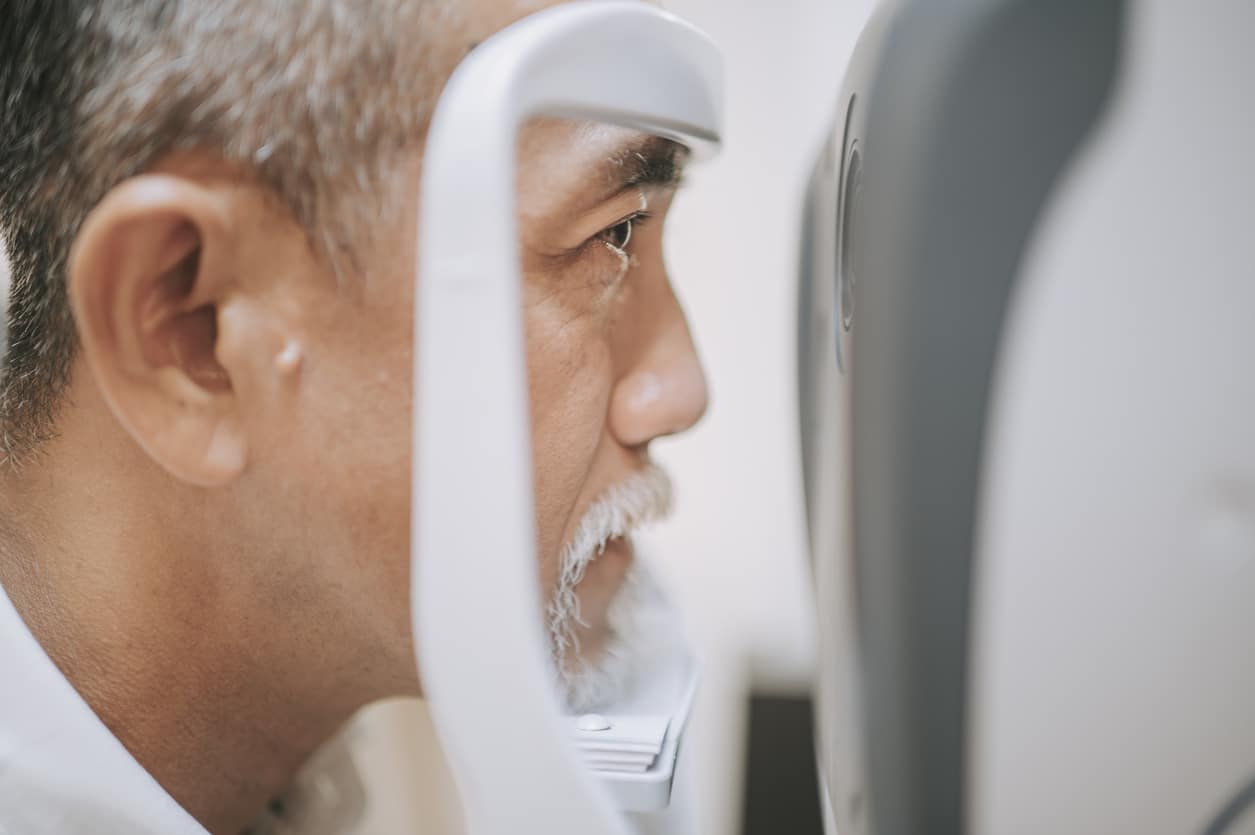Experienced Glaucoma Specialists Serving Provo
Glaucoma is a progressively damaging ocular disease that can lead to permanent vision loss, as it affects the optic nerve responsible for transmitting visual signals to the brain. Glaucoma is the second leading cause of blindness in the United States, largely in part because it does not present noticeable symptoms in its early stages.
This issue underscores the importance of regular eye exams for early detection and treatment of glaucoma and other conditions. Due to the potential for irreversible vision loss, individuals should prioritize proactive eye care and promptly seek evaluation from an eye care provider if they notice any changes in their vision.

How is Glaucoma Diagnosed?
Many people with early glaucoma don’t notice any symptoms until the condition has progressed to an advanced stage. Unfortunately, there is no cure for glaucoma. Therefore, it is very important to have routine eye exams, especially for those 60 and older, in order to diagnose and treat glaucoma in the early stages of the disease.
A thorough optometry exam includes checking for symptoms of glaucoma. During a glaucoma evaluation, our doctors will use the latest technology to measure your eye pressure, test your peripheral vision, check your corneal thickness, and digitally image your optic nerve. If glaucoma is caught early, further vision loss can be prevented.
Risk Factors for Glaucoma
What Are Some Causes of Glaucoma?
Although there are many types of glaucoma, and the exact causes are unknown, the general characteristics are understood. Primary open-angle glaucoma is the most common form of the disease. This form results when the eye cannot drain fluids efficiently, leading to increased pressure in the eye and damage to the optic nerve. Changes to the blood supply fueling the optic nerve may also cause optic nerve damage, resulting in vision loss.
A less common form of glaucoma, called angle-closure glaucoma, occurs when the drainage angle between the iris and cornea is blocked. This causes a rapid buildup of fluid, which can permanently damage vision within one day of its onset. Other forms of glaucoma form because of medical conditions, physical injuries, abnormal eye conditions, or medication use.

Provo’s Glaucoma FAQs
The two primary treatment methods for glaucoma are eye drops and surgery.
Drops: Glaucoma can often be successfully treated with prescription eye drops, which help decrease eye pressure.
Surgery: There are many successful glaucoma surgeries that can be performed. The goal of glaucoma surgery is to increase the outflow of fluid from inside the eye and decrease intraocular pressure which will halt or slow the progression of vision loss from glaucoma.
Certain groups of people are at greater risk for developing glaucoma:
- Older adults: Individuals greater than 60 years old are at increased risk for developing the disease. The risk continues to rise slightly for each year beyond 60.
- African Americans and Asians: African Americans are significantly more likely to develop glaucoma than Caucasians, and that risk begins to rise at age 40. Similarly, Asian individuals are at greater risk of angle-closure glaucoma, while people of Japanese descent are at a high risk of another form of the disease called low-tension glaucoma.
- Diabetes and cardiovascular disease: These medical conditions significantly increase glaucoma risk, and high blood pressure is a risk factor for the disease.
- Family history: If you have one or more first-degree relatives with glaucoma, your risk for the disease increases. This suggests that there may be a genetic component to developing glaucoma.
- Corticosteroid use: Corticosteroids are commonly prescribed to reduce inflammation related to arthritis, lupus, and other conditions. Chronic use of corticosteroids may increase your risk of developing glaucoma.
Primary open-angle glaucoma is the most common form of glaucoma, and it is hereditary. If glaucoma runs in your immediate family, your risk of developing the condition is increased significantly, with the risk being four to nine times higher compared to those without a family history of the disease.
Request an Appointment
If you suspect you have glaucoma, or if it runs in your family, schedule an evaluation with Dr. Smith or Dr. Lewis. We will help you understand glaucoma and formulate a treatment plan as a team. Call (801) 373-4550 or request an appointment using the link below.
Regular eye exams and paying attention to your eye health or changes in vision are important aspects of retaining your sight. Whether you have glaucoma or not, we will work with you to assess your vision needs to support better eyesight and meet your eye care needs. Make your eye health a priority today.
